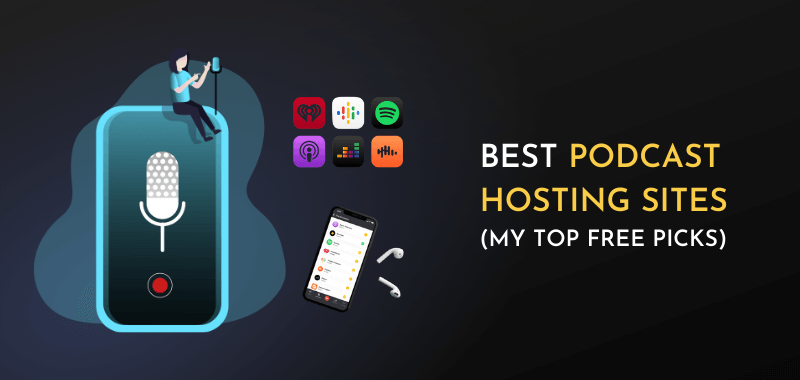Podcasting has become an incredibly popular medium for sharing ideas, stories, and expertise. Whether you’re a hobbyist or looking to build a professional brand, starting a podcast can be both exciting and overwhelming. To help beginners succeed, we’ve compiled the best podcast tricks to improve audio quality, grow your audience, and monetize effectively.
A. Essential Podcast Equipment for Beginners
Before hitting the record button, you need the right tools. Here’s a breakdown of must-have podcasting equipment:
-
Microphone – A high-quality mic is crucial. USB mics like the Blue Yeti or Audio-Technica ATR2100x are great for beginners.
-
Headphones – Closed-back headphones (e.g., Sony MDR-7506) prevent audio bleed and improve editing accuracy.
-
Audio Interface – If using an XLR mic, an interface like the Focusrite Scarlett 2i2 ensures clean sound.
-
Pop Filter – Reduces plosive sounds (like “p” and “b”) for clearer speech.
-
Recording Software – Free options include Audacity (for editing) and GarageBand (for Mac users).
B. How to Improve Podcast Audio Quality
Poor audio can drive listeners away. Follow these steps to ensure professional sound:
-
Record in a Quiet Space – Avoid echo by using a carpeted room or adding soundproofing foam.
-
Use a Noise Gate – Editing tools like Adobe Audition can eliminate background noise.
-
Normalize Audio Levels – Keep volume consistent to prevent sudden loud or quiet sections.
-
Edit Out Mistakes – Remove long pauses, filler words (“um,” “uh”), and awkward silences.
-
Add Intro/Outro Music – Royalty-free music from Epidemic Sound or YouTube Audio Library enhances professionalism.
C. Best Podcast Hosting Platforms

Your podcast needs a reliable host to distribute episodes. Top options include:
-
Buzzsprout – User-friendly with great analytics.
-
Libsyn – A veteran platform with monetization options.
-
Anchor – Free hosting with Spotify integration.
-
Podbean – Offers unlimited storage and monetization tools.
D. How to Grow Your Podcast Audience
Building an audience takes time, but these strategies help accelerate growth:
-
Optimize for SEO – Use relevant keywords in your title, description, and show notes.
-
Leverage Social Media – Share clips on TikTok, Instagram Reels, and YouTube Shorts.
-
Collaborate with Guests – Invite influencers or experts to expand your reach.
-
Engage with Listeners – Respond to comments and encourage reviews.
-
Submit to Directories – Ensure your podcast is on Apple Podcasts, Spotify, and Google Podcasts.
E. Monetization Strategies for Podcasters
Once you have an audience, consider these income streams:
-
Advertisements – Join AdSense, Podcorn, or Midroll for sponsorships.
-
Affiliate Marketing – Promote products and earn commissions via Amazon Associates or ShareASale.
-
Patreon or Memberships – Offer exclusive content to paying subscribers.
-
Merchandise – Sell branded items through TeeSpring or Printful.
F. Common Podcasting Mistakes to Avoid
Beginners often make these errors:
-
Inconsistent Posting Schedule – Stick to a regular release day.
-
Poor Audio Quality – Invest in decent equipment.
-
Ignoring Analytics – Track downloads and listener demographics.
-
Overlooking Promotion – Just uploading isn’t enough—market your show.
G. Advanced Tips for Long-Term Success

For those ready to level up:
-
Transcribe Episodes – Improves SEO and accessibility.
-
Repurpose Content – Turn episodes into blog posts or YouTube videos.
-
Run Giveaways – Boost engagement with contests.
Conclusion
Starting a podcast is easier than ever, but standing out requires strategy. By using the right equipment, optimizing audio, leveraging hosting platforms, and growing your audience, you can build a successful podcast. Monetization comes with consistency and smart marketing—so keep improving and engaging with listeners!












